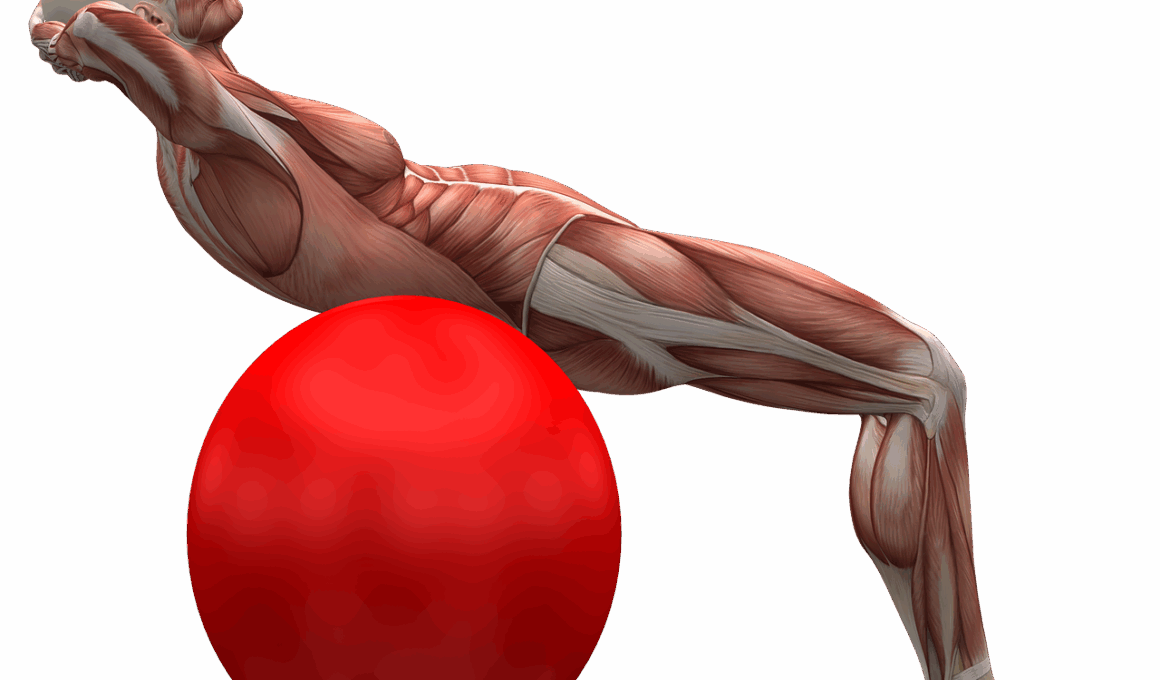5 Essential Balance Ball Exercises for Seniors
Maintaining balance is crucial for seniors to prevent accidents and improve mobility. Balance ball exercises utilize stability balls to enhance coordination and strength. These exercises are specifically designed to cater to the elderly, focusing on low-impact movements that help develop core stability and foster better physiological function. Using the ball, seniors can engage in a variety of workouts that not only strengthen muscles but also promote greater flexibility and teaching control. Regular practice of these exercises can lead to improved posture, increased confidence, and a reduced risk of falls. Moreover, the stability ball provides support while offering resistance, making the workouts effective and enjoyable. For seniors, incorporating these activities into their routine can make a significant difference in overall health. This article outlines five essential balance ball exercises that are especially beneficial for seniors. By following these exercises, seniors will improve their body awareness, enhance their balance abilities, and cultivate a stronger connection between their mind and body. Let’s explore these five essential exercises that can lead to healthier outcomes and boost confidence in daily movements.
1. Seated Ball Balance
This seated exercise is an effective way for seniors to gradually develop their core strength. Start by sitting on the ball with feet flat on the floor and shoulder-width apart. Ensure that your back remains straight and engage your core muscles. Maintain this position for 30 seconds, aiming to hold onto a chair or wall for support if necessary. For an added challenge, lift one leg off the ground for 10 seconds before switching to the other leg. This not only helps enhance balance but also strengthens core muscles, which are essential for overall stability. Additionally, practicing controlled breathing will ensure relaxation as you perform the exercise. Aim to repeat this exercise three times daily, gradually increasing the duration as you gain strength and confidence. Using a stability ball helps absorb impact while maintaining a low-risk environment that encourages seniors to strengthen their balance capabilities. As you improve, progressively increasing the hold time while, maintaining your posture will yield greater benefits. Adhering to this seated ball balance will yield better functionality in daily activities.
The second exercise, known as the Ball Taps, is geared towards improving agility and coordination. Start by standing behind the ball, feet shoulder-width apart. Gently place one foot on top of the ball, keeping balance without losing your posture. Begin tapping the ball lightly with opposite foot, alternating between each foot for about three minutes. This dynamic movement promotes stability and helps enhance leg strength. Balance ball taps are effective for building coordination and ensure seniors are engaged in functional training. As you feel more confident, increase the speed of your taps. For added difficulty, consider closing your eyes while tapping and focusing on your balance. Engaging your core muscles while performing this exercise is vital, as it stabilizes the whole body. Moreover, practicing these taps frequently can result in a pronounced improvement in overall body balance and coordination. Incorporating this functional move into daily workouts sets the foundation for greater strength training activities. This exercise allows older adults to develop a sense of security while moving and stimulates cognitive engagement for better overall health.
3. Wall Squats with Ball
Wall squats combined with ball support enhance leg strength while promoting balance effectively. Stand with your back against the wall and place the ball just above your knees. Slowly slide down the wall to a seated position while keeping the ball in place. Hold this position for 10 seconds, ensuring that your knees stay behind your toes. While in this position, activate your core for better stabilization. After holding, gently slide back up to a standing position. Repeat this squatting motion 10 times, allowing adequate rest between sets. Wall squats can serve as an excellent strength-building exercise, particularly targeting the thighs and glutes. With consistent practice, seniors will notice improved leg strength, stability, and enhanced balance in movement. This exercise also serves as a great way to improve a senior’s ability to transition from standing to sitting positions with ease. Remember to adjust the height of the ball or wall set-up based on comfort. Practicing these squats tailored for older adults guarantees a low-impact alternative for strength enhancement and maintaining mobility in daily life.
The fourth exercise, called the Ball Rock, targets abdominal strength and core stability. Begin by sitting on the stability ball with feet flat on the floor and shoulders back. Once stable, gently lean back, engaging the core muscles while slowly rolling backward on the ball until your mid-back is resting against the ball. Hold this position, ensuring not to arch the back excessively, for five seconds before rolling back to the starting position. Repeat this exercise 10 times; it may effectively build core stability and promote a better sense of balance. Seniors can benefit from this rolling movement as it incorporates a gentle stretch to the spine while enhancing muscle strength. It also encourages coordination between upper and lower body movement. Focus on controlled, smooth motions throughout the exercise to safeguard against injury. As strength improves, consider extending hold times or increasing the number of repetitions. This exercise helps in building confidence during transitions from standing to sitting, positively affecting daily life. Ultimately, the Ball Rock exercise contributes significantly to overall balance and stability as well as core strength development.
5. Ball Pass
The Ball Pass exercise is an engaging way to boost upper body strength while fostering balance. To begin, sit tall on the ball with feet and shoulders aligned. Hold a small ball in both hands, extending arms forward at shoulder height. Slowly lean back, keeping your back straight and engage your core muscles. From there, pass the ball between your legs while squeezing your glutes before returning to the starting position. Repeat this movement for ten repetitions, ensuring controlled motions. This exercise not only targets core stability but also encourages coordination among upper and lower body movements. Practicing this exercise fosters greater body awareness and enhances balance capabilities. As comfort grows, increase the speed of ball passing, progressively heightening the challenge. Remember to stay focused and maintain proper posture to reap maximum benefits while preventing injury. The Ball Pass helps strengthen not only the core and lower body but also improves flexibility, coordination, and endurance with regular practice. Integrating this practice into your routine will aid in creating a stronger foundation, enabling seniors to navigate their surroundings with confidence while engaging in everyday activities more effectively.
In conclusion, balance ball exercises hold significant value for seniors focusing on health and stability. They provide a platform for enhancing core strength and improving coordination levels effectively. Encouragement of regular practice is essential for the desired results, leading to improved confidence in movement and reduced risks of falling. It’s important to approach each exercise with caution and patience, considering safety throughout the routines. Engage with a qualified fitness instructor if necessary to ensure proper form and technique while practicing these exercises. Additionally, consistency remains crucial for transferring learned skills into everyday life tasks. Over time, seniors can observe lasting improvements distinguishing better balance, flexibility, and functional strength. Encourage group classes to foster a supportive environment while engaging in these exercises together. This sense of camaraderie can enhance motivation and socialization amongst seniors. Overall, embracing balance training can motivate seniors to adopt healthier lifestyles while maintaining physical independence. Consider setting aside time each day for practicing these essential exercises to maximize their benefits, ensuring ongoing wellness through improved balance and overall fitness. Incorporating these exercises into daily routines will lead to healthier lifestyles and improved well-being for seniors moving forward.






